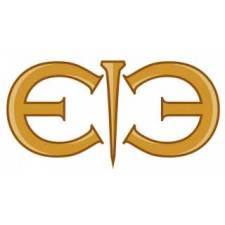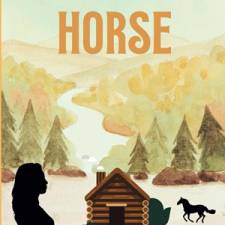Hollow, tense back muscles? Are you riding in a “gender appropriate” saddle?
Selecting the appropriate ‘male’ or ‘female’ saddle tree design helps to disperse the rider’s weight optimally over the horse’s saddle support area to avoid unwanted pressure points and assists in a balanced seat. Symptomatic pain and incorrect muscle contraction (leading to atrophy) can be caused by pressure points; the horse is unable to bring his back up properly and move freely if the saddle doesn’t allow ‘tree lift’.
The tree correctly positions the rider’s seat bones so the 4 natural curves of the spine act as shock absorbers, a prerequisite to riding lightly and moving in harmony with the motion of the horse.
The video shows that the balance point of the female pelvis on the horse’s back is very far forward, her tailbone much shorter, with no natural support from her gluteal muscles. She collapses at the hip, which positions her further back in a chair seat. Her back is hollow, her spinal column is not erect, and her vertebrae are not level.
She loses the natural shock absorbing ability in the lumbar area and is unable to ride ‘lightly’. Leaning forward or backward, she uses tremendous effort to sit ‘properly’ with the horse, putting excess pressure on the discs between her vertebrae.
A slipped disc can be caused over a period of time from the same repetitive motion when the rider’s pelvis falls back in the saddle (not enough support), and the rider has to continue to force the correct upright position to keep over the horse’s centre of gravity. This image shows 2 lumbar vertebrae out of alignment.
In a saddle with a tree made for a man, a woman does not have the necessary support behind her pelvic area to sit correctly in balance and in position. The plumb line is shown in green. She is tilted backward from the vertical (along the axis shown by the red lines).
We then see the marked comparison with the male pelvis - easily balancing on his seat bones, on the centre axis, spinal column erect, secure and comfortable, able to use spinal curves as shock absorbers so he can ride lightly.
When the rider is not secure, supported and sitting erectly in a gender appropriate saddle, it will directly affect your horse - his level of pain or comfort, suppleness of back or tense and hollow, his ability to move freely, the occurrence or avoidance of pressure points.
Keeping your horse happy and healthy starts with your choice of the correct saddle for you as the rider. In an 80 point saddle fit evaluation, your saddle ergonomist or saddle fitter assesses fit to both rider and horse to ensure optimal weight distribution over the approx. 128 (+/- depending on model) square inch saddle support area.
Avoid unwanted pressure points. We all want a happy and healthy horse!
Jochen Schleese is author of ‘Suffering in Silence - The Saddle Fit Link to Physical and Psychological Trauma in Horses’ (Trafalgar Books 2013, 2015, 2017). Find solutions for saddle fit issues through Saddlefit 4 Life education. SaddlesforWomen.com 800-225-2242 © Saddlefit4Life 2018. All Rights Reserved. This video is published here with permission.
Are you interested in promoting your business or sharing content on EIE? Contact us at info@equineinfoexchange.com











